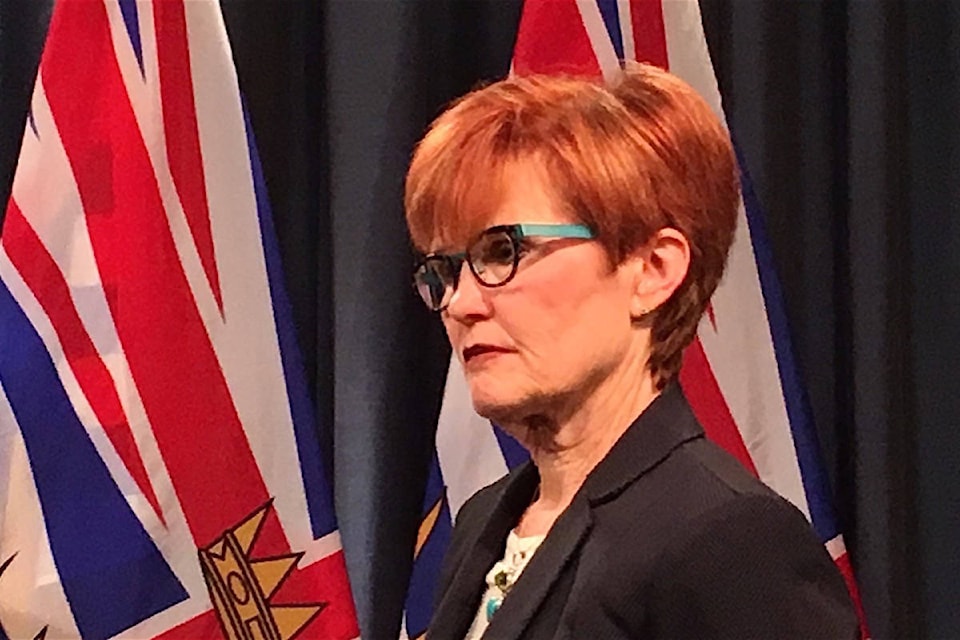One of the things to watch as the B.C. legislature prepares to resume is the remake of ICBC rates and penalties.

You may recall the blame-storming session after the NDP took over, featuring cabinet minister David Eby’s “dumpster fire” rhetoric for runaway ICBC costs. Eby produced parts of an outside study that the B.C. Liberal government had withheld, and began the latest overhaul of the 40-year-old vehicle insurance monopoly.
The Ernst & Young report highlighted huge deficits, driven mainly by crashes and soaring minor injury claim costs, ridden by personal injury lawyers and medical experts that other provinces reined in long ago. Eby’s first announcement was a $5,500 cap on “pain and suffering” payouts, and a civil resolution panel to get minor injuries out of court.
None of this takes effect until September 2019. And when Eby says “good drivers pay less,” he doesn’t mean, er, less. ICBC will file its next rate application by the end of 2018, when Eby hopes you are busy Christmas shopping.
That’s on top of the 6.4 per cent hike in basic insurance that took effect last fall. This fall, in what may be Eby’s only popular move, rate increases for penalty points and serious offences went up 20 per cent, rising another 20 per cent in 2019.
Next year, young drivers will pay more, regional rates will change to reflect growing urban risks, drivers will have to pay extra for a learner or unlisted driver, and forgiveness of any at-fault crash disappears.
READ MORE: ICBC moves to tighten safe driver discount rules
The Ernst & Young report has a chart showing that when you factor in population growth, B.C.’s accident rate actually went down between 2005 and 2014. (See page 61 of the report.)
Ferrari street racers and texting millennials are sexy media stories, but the big picture also includes safer roads, safer vehicles and lots more drivers, many of them older.
Eby doesn’t talk much about the performance of the NDP touchstone, a public monopoly. ICBC’s ability to innovate is illustrated by paralysis in the face of Lyft, Uber and similar ride-hailing services. That calls for usage-based insurance. Don’t hold your breath.
Private insurers have their own study, showing costs would come down with competition. You could bundle your home and car insurance, get a loyalty discount, and hey, maybe even something other than Soviet-style claims service.
Aaron Sutherland of the Insurance Bureau of Canada says the ICBC monopoly “tends to drag claims out longer, and that creates higher claims costs overall.” Identifying bad drivers could be done with a chip in the car, recording speed and hard braking, but don’t wait for ICBC on that either.
This problem isn’t new. In 2011, ICBC basic rates jumped 11 per cent. An audit revealed bloated management, 260 positions were cut and a politically appointed board chair exited. Have things really changed?
ICBC’s Joanna Linsangan says the explosion of crashes is no myth. There were 350,000 in 2017, a 25 per cent increase since 2014. Injury claim costs are up 26 per cent over the same time. Vehicle repair bills rose 47 per cent. Eby hopes his minor injury and other changes will save ICBC $1 billion a year.
Sutherland agrees, distracted driving and crash claims are up across North America. But the government’s own study compares B.C. with Alberta’s competitive insurance market.
“You pay less in Alberta, and you get more when you make a claim,” he said. “You get much more value for your money.”
Tom Fletcher is B.C. legislature reporter and columnist for Black Press. Email: tfletcher@blackpress.ca
@tomfletcherbc
tfletcher@blackpress.ca
Like us on Facebook and follow us on Twitter.
